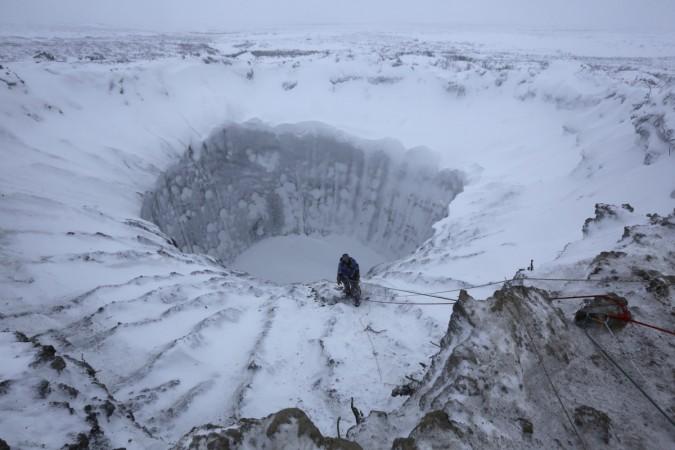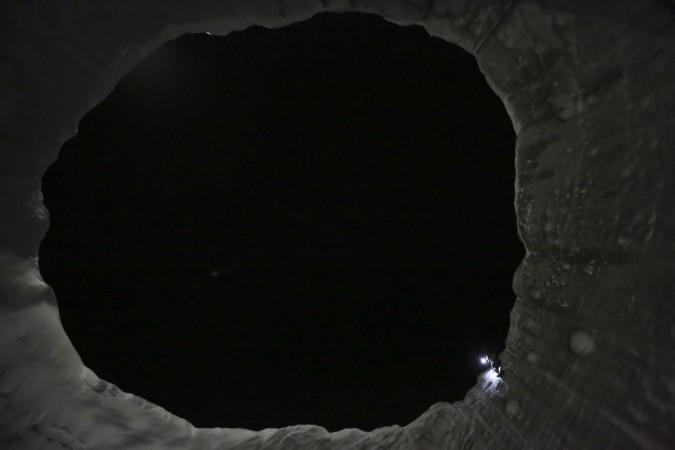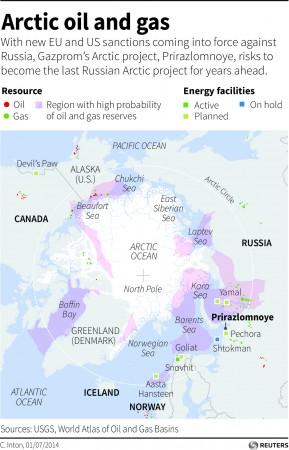
Russia has devised a new early-warning system of seismic sensors with an aim to predict permafrost explosions, which form strange Arctic craters.
Russian officials fear these eruptions may end up damaging pipelines and gas production facilities in the Yamal peninsula — an autonomous district of northwest Siberia, Russia — according to the the Daily Mirror.
These bizarre looking craters, first spotted in 2014, formed suddenly and mysteriously. It was assumed that they were caused by missile tests, carried out by the military.
It's now, however, believed that the these craters are formed by the warming Arctic climate, which results in the release of methane gas triggering the explosions in pingos on the Yamal peninsula.
A pingo is a mound of earth-covered ice found in the Arctic and subarctic region; these are also referred to as hydrolaccoliths and can be as big as 2,000 ft (600m) in diameter and 230 ft (70 metres) in depth.

Around 10 of these pingos are known to have exploded and cratered over the past few years in Siberia.
"The first seismic detector was installed near Sabetta. It is a device that scientists need to track, study and forecast possible dangerous natural phenomena in the area of industrial exploration," a regional spokesman in Yamalo-Nenets told the Mirror.
Fast facts about Russia's oil and gas reserves
- Russia was the world's largest producer of crude oil including lease condensate and the third-largest producer of petroleum and other liquids (after Saudi Arabia and the United States) in 2015.
- Russia was the second-largest producer of dry natural gas in 2015 (second to the United States), producing 22.4 trillion cubic feet (Tcf), according to Russian Energy Ministry data.
- Europe is dependent on Russia as a source of supply for both oil and natural gas, with almost 30% of European Union crude imports and more than 30% of natural gas imports coming from Russia in 2015.
- In 2015, almost 60% of Russia's crude exports and more than 75% of Russia's natural gas exports went to Europe.
- Russia is the third-largest generator of nuclear power in the world and has the fifth-largest installed nuclear capacity. Russia is second to China, in terms of number of reactors under construction as of August 2016.
- Russia consumed 30.52 quadrillion British thermal units (Btu) of energy in 2013, the majority of which was in the form of natural gas (53%). Petroleum and coal accounted for 22% and 14% of Russia's consumption.
Sources: Russia Ministry of Finance; Reuters, Global Trade Tracker, IAEA
Liquefied gas from the Yuzhno-Tambeyskoye field is exported from Russia's most important port, Sabetta, where a sensor has also been installed. There are chances that these exploding pingos could destroy infrastructure at the £22 billion development.
Other sensors will be installed around gas deposits -- Bovanenkovskoye and Kharasavay – which are being exploited by Russia, these sensors would have a 125-mile range.













!['Had denied Housefull franchise as they wanted me to wear a bikini': Tia Bajpai on turning down bold scripts [Exclusive]](https://data1.ibtimes.co.in/en/full/806605/had-denied-housefull-franchise-they-wanted-me-wear-bikini-tia-bajpai-turning-down-bold.png?w=220&h=138)
![Nayanthara and Dhanush ignore each other as they attend wedding amid feud over Nayanthara's Netflix documentary row [Watch]](https://data1.ibtimes.co.in/en/full/806599/nayanthara-dhanush-ignore-each-other-they-attend-wedding-amid-feud-over-nayantharas-netflix.jpg?w=220&h=138)



